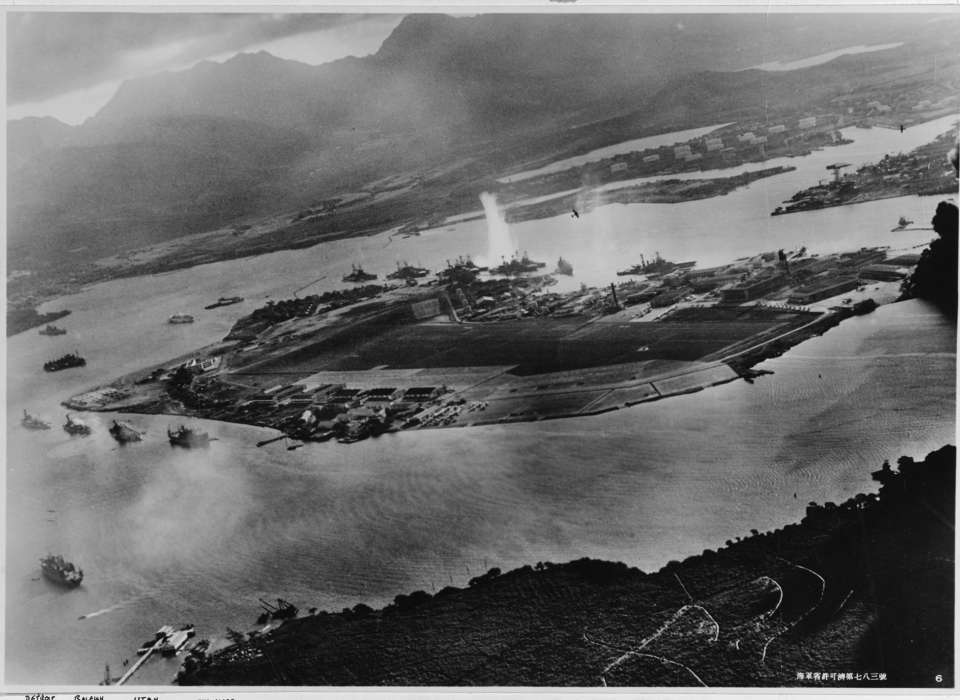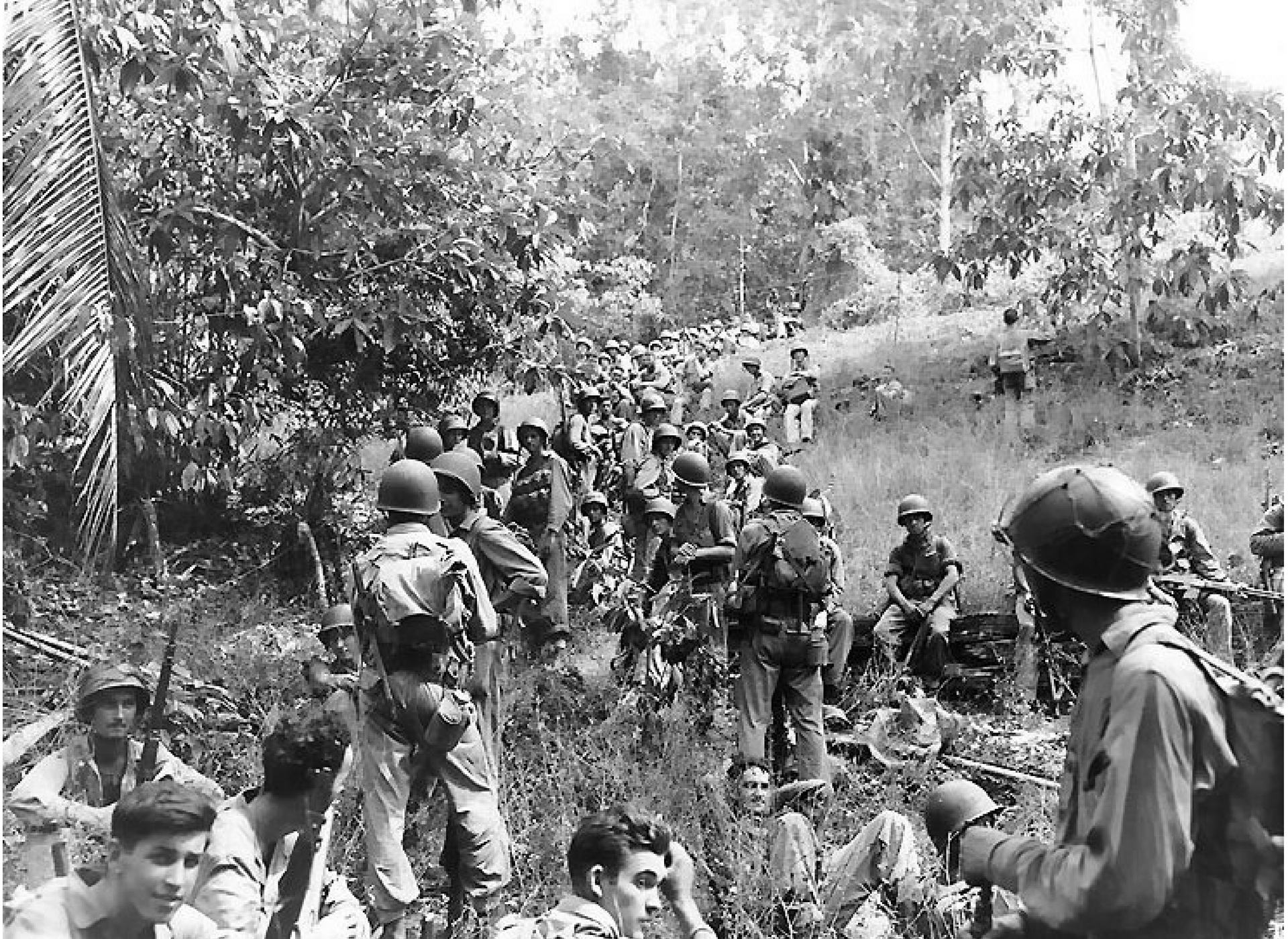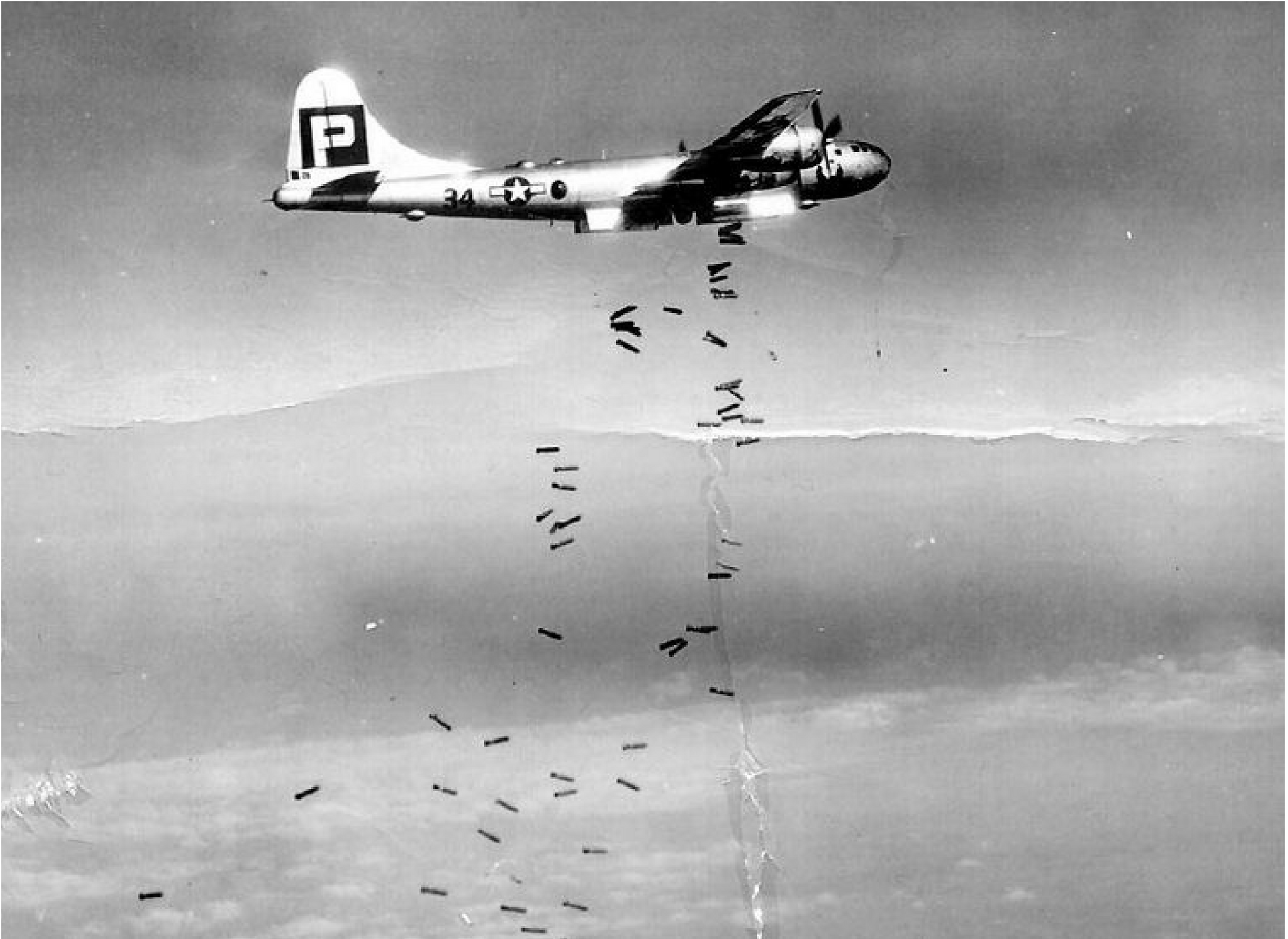Lead Image: Credit US Navy Photo NH 50930.
Background: For the first six months after the Japanese attacked Pearl Harbor, the situation looked very grim for the United States in the Pacific. The Japanese rolled through the Pacific at will. They managed to occupy Wake Island, Malaya, Hong Kong, the Philippines, and in March 1942 forced General Douglas MacArthur to evacuate from the Philippines. By April 1942, when the Japanese forced 75,000 starving and sick Allied POWs to walk more than 60 miles under the most horrendous conditions in the scorching heat with little food or water during the Bataan Death March, there appeared to be little hope for an American victory. US morale received a much needed lift when Colonel Jimmy Doolittle led 16 B-25s from the carrier USS Hornet (CV-8) to bomb targets in Japan. Although more symbolic than anything, it showed the Japanese that the United States was in the fight. The big turning point was undoubtedly the Battle of Midway, June 4–5, 1942, in which the Japanese lost four precious aircraft carriers—a decisive victory for the US Navy. The next crucial move took place two months later, on August 7, when the 1st Marine Division invaded Guadalcanal.
The struggle for Guadalcanal lasted for nearly eight months and combined sea, land, and air forces in a joint effort for the first time in history. It was another major defeat for the Japanese. By 1944 the situation in the Pacific was looking brighter, and there was hope for optimism. US Marines invaded Saipan—a costly victory that put the Japanese home islands in range for American B-29 bombers for the first time. During that same month, US carrier planes shot down more than 200 hundred Japanese planes over the Philippine Sea, while only losing 20 American planes in the “Great Marianas Turkey Shoot.” On October 20, 1944, two and a half years after he had left Bataan, General MacArthur returned to the Philippines.
By November 1944, there was reason to believe the tide of the war was turning in favor of the United States. However, the Japanese proved to be fierce fighters and surrender was not a word that existed within their ranks. They would fight to the last man.
Results:
Source: Roper/Fortune Survey, Nov. 1944, Roper Center for Public Opinion Research at Cornell University.
What happened after the poll was taken in November 1944?
The fighting that took place at the beginning of 1945 was the fiercest engagement experienced during the Pacific war for both sides. On February 4, 1945, the 11th Airborne Division reached the outskirts of Manila, the capital of the Philippines. The fighting that took place in Manila was urban guerrilla warfare similar to the combat seen in Stalingrad, Russia. Over 100,000 Filipino civilians were killed. The atrocities that were committed by the Japanese were unimaginable. While the savage fighting was taking place in Manila, the US Marines of the 3rd, 4th, and 5th Divisions invaded Iwo Jima. Iwo Jima is a volcanic island of eight square miles with no harbors. In 1945 the island provided the United States with the ability to launch planes from 650 miles south of Tokyo, and so was strategically vital. When the fighting was over, there were 23,000 Americans killed or wounded. It was the only island battle during the war in the Pacific in which US casualties outnumbered the Japanese. The final major battle of World War II took place on Easter Sunday, April 1, 1945, when the Unites States invaded Okinawa. At the time of the invasion, Okinawa had a population of 500,000. The American invasion force consisted of over 285,000 soldiers supported by one of the largest armadas assembled during the war in either Europe or the Pacific. This was a struggle for life and death. The Japanese were fighting close to their homeland and there was no concept of surrender. The fighting lasted until June 22 and at the conclusion of the battle casualties were high on both sides. The Japanese employed Kamikaze attacks (Japanese fighter planes crashing deliberately into US naval ships) responsible for sinking over 30 ships. During the battle, more than 12,000 Americans died and 50,000 were wounded. More than 150,000 Japanese deaths occurred on Okinawa, including civilians. Many Japanese civilians committed suicide rather than surrender. After Okinawa, the reality set in that the next invasion would take place on Japanese soil and that the Japanese would not surrender. Casualties for an invasion on mainland Japan were predicted to exceed well over 400,000. The invasion of Japan never happened.
As the vice tightened around Japan, bringing the war closer to an end, the Japanese fought with all they had, and the casualties mounted. The final nine months of the war in the Pacific produced some of the most brutal and deadliest fighting of World War II. The war was suddenly ended with the dropping of the atomic bombs on the Japanese cities of Hiroshima and Nagasaki.
When the poll asking when the war in the Pacific would be over was conducted in November 1944, there were 10 different responses. Most Americans were of the opinion that the war would last for well over a year. Only 3 percent believed the war would be over in nine months. In fact, the war was over in nine months, and the cost was some of the most horrific casualties of World War II.

WWII Polls
Public opinion polls give us unique insight into America in the WWII era. Each week, historians from the Institute for the Study of War and Democracy work with the archives of the Roper Center for Public Opinion Research at Cornell University to explore what Americans believed and how they felt about events and people related to the WWII years.
Dan Olmsted
Cite this article:
MLA Citation:
APA Citation:
Chicago Style Citation:









![Max Fuchs, New York City cantor, sings as Rabbi Sydney [sic] Lefkowitz, Richmond, VA, conducts the first Jewish services from Germany.](/sites/default/files/styles/max_650x650/public/2025-10/image1.jpg)

